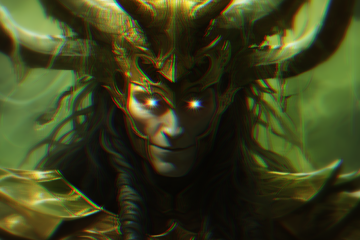The Hunger Games, Squid Game, or the superior Battle Royal from Japan are dark “kill or be killed” aspects of fiction. Whether through force or being chosen, poor people are thrown into a death battle for the benefit of the elite. Battle royals have had a decent influence on pop culture over the past decades and altered how we look at entertainment. The recent Purge movies are a little more abstract; then there’s the Running Man, Death Race, The Condemned, Kill Theory, Gamer, and many many more. I really could go on for some time. But, they got nothing on Nazino Island, and Nazino Island actually took place in the real world.
In the 1930s, Stalin was busy conducting brutal purges of anyone and everyone that said stuff he didn’t like or didn’t think the way they were told to by the state. Stalin would ruthlessly eliminate anyone who challenged his new social order, which meant entire classes of people were on the chopping block, as well as anyone with their own opinions or free thought. Joseph Stalin and the communists would murder vast millions of innocent people, but in March 1933, the Soviet leader was presented with a whole new type of gulag to oppress the masses.
Matvei Berman, who was in charge of the whole gulag system of the Soviet Union, and Genrikh Yagoda, the man in charge of the Soviet secret service, showed Stalin a plan to get rid of two million political deplorables. And Stalin, always down for new ways to oppress the innocent, eagerly approved the project. The political prisoners would be sent to Siberia and Kazakhstan in autonomous communities that would be self-sufficient, with a bonus the Soviets could use for propaganda by saying the victims were “settlers” of new land for the benefit of the Soviet Union as a whole. Russia had been starving for some time from famine thanks to failed communist policies, so it would be beneficial to get rid of mouths to feed that could cause political dissent in the motherland. So, in that same year of 1933, the first batch of victims was rounded up and forced on trains to their final destination in the frozen Siberian Island of Nazino.
Off an icy marshland in Siberia, the local Ostyak people were the only ones ever to visit the island that would become the gulag. It was more a swamp than an actual island. Nazino was in the middle of frozen waters, with no buildings, or food, or anything. It would get its name from a local village by the same name. However, Nazino is not the name the locals call the island. The Ostyak call it Cannibal Island, and I’m sure you can guess why.
It was estimated the colony would struggle, but in the end, take around two years (three tops), to establish self-sufficiency. However, in communist Russia, no one ever wanted to take the blame for anything that might possibly go wrong. People in the party who had bad news often were seen as the bad news themselves and relieved of life through firing squads. Hence, communication and efficiency were rare, and the Nazino colony would be a horrific failure. The victims were thrown into something they were not prepared for in the slightest, and the Soviets in charge of the gulag were the very definition of incompetence, corruption, and depravity.
The first batch of two million deplorables was rounded up and forced into trains. There were six thousand two hundred political dissidents in total. By the time they’d reached Nazino Island, the political prisoners were already suffering greatly, with twenty-seven people dead from the trip alone. Most people lost their few valuable items to thugs on the train ride through Siberia. Hope was all but gone by the time they were put on boats and taken to the island, but that small amount of hope that still endured would be squashed soon enough because their descent into Hell had just begun.
The undesirables were pushed out of the ship into the wilderness. It didn’t take long for the players in this game of death to realize just how screwed they truly were. The island was supposedly a labor camp, but there were no farms, tools, shelter, or anything. The political prisoners were immediately at the mercy of the elements. Close to three hundred froze to death the very first night.
[the_ad_placement id=”manuel”]
It’s safe to assume the older gulag prisoners died first, but only the hardiest would last long. Flour was the only resource the Soviets had sent the guards, and they passed it out, but the starving people swarmed them, and the guards got trigger happy, shooting into the crowd to send a message. The next day, the guards again resorted to shooting at the crowds until a better system of a single prisoner from each group was ordered to get the flour (unless more prisoners wanted to eat lead). However, one of the issues was that these people singled out to get the flour were thugs who muscled their way into the position and abused their new power immediately to the extreme.
Having only flour, some tried mixing it with river water, only to get dysentery and die. A miasma of pestilence spread among the victims with incredible speed and virulence. Desperate people attempted to leave the island by making crude rafts, only for their corpses to wash back up on Nazino’s shore not long after. However, some did make it across, but guards let them go because they were as good as dead going into the Siberian wilderness resourceless. Other guards would hunt and kill these escapees for sport. Everyone who tried to leave was never heard from again, and it only took a couple of days for the island to be littered with dead bodies. But despite this, the Soviets kept bringing more and more people to the island while being fully aware of the horror show going on there. Again, they didn’t want to give any superior bad news, even as rumors of cannibalism spread among the communists in charge of the gulag.
[the_ad_placement id=”manuel”]
The snow and freezing winds, along with weakness from starvation, lead to people burning alive while sleeping by their fires. Exhaustion and cold killed many more. The guards would walk around the island’s perimeter and shoot anyone they came across to send a message to everyone else. With nothing to cook the flour with, there are reports of some even choking to death by accidentally inhaling it from their weak fumbling desperation. If someone found something to eat, they’d be quickly murdered. People did what they wanted with who they wanted with little regard to anything but their own animalistic urges. As the island further descended into a maelstrom of madness, it was kill or die.
The remaining survivors basically started living a real-life Battle Royal, or Squid Games, at this point. They were dead if they escaped and most likely dead if they stayed. So the only option was to give up any semblance of humanity if they wanted a chance at survival. Violent maniacs quickly took over, and the Soviet guards could not control anything, really, so the brutes were free to do whatever horrific acts they wanted. These thugs stole anything that was possibly useful, leading to more starvation and murder day by day. But the guards, too, were quick to execute victims mercilessly for the most mundane and menial things. Tribalism became the only aspect of life, with violent exchanges between factions constant. By the end of the first week, cannibalism was widespread.
The Island was a horrific real-world Hunger Games. And with Nazino Island as far away from civilization as you could get, there was no hope any of them would get out of the game alive. People would be held down and have their calves cut off, then left for dead. One survivor, when later asked if he ate people said he did not; he’d only ever eaten livers and hearts of the others. The man talked about how he and his gang made skewers out of tree branches and cooked human organs over campfires many times, but they’d never eaten human meat (like that meant anything after killing someone and eating their internal organs).
“I picked those who were not quite living, but not yet quite dead,” he added. “It was obvious that they were about to go – that in a day or two, they’d give up. So it was easier for them that way. Now. Quickly. Without suffering for another two or three days.”
-Survivor of the gulag
In 1989 an old Ostyak woman who was thirteen years old during the harrowing events of Nazino Island was interviewed. Her tribe had lived in the area for what seemed eons, and they’d visited the island many times in the past, but it had always been uninhabited. However, in 1933 when they visited, the woman said they were surprised to find bodies everywhere. She told the story of a girl sent there who was taken as a lover by a Soviet guard. The girl was abducted in his absence by some now insane island prisoners. They tied her to a tree. Then cut off all edible meat from her body while she was still alive. After it was over, the Ostyak woman’s group visiting the island tried to save the girl, but she’d lost too much blood. The interview is disturbing to the extreme. It shows how any humanity that the gulag prisoners had quickly left them in a bid for survival.
Once word got back to the higher-ups of all the insanity, the Soviets were baffled. It took a single month for the settlement to be officially closed, and the higher-ranking officers were utterly disgusted at the cannibalism and horrors that took place on the island. In the end, only a handful of guards were put in jail, and the entire incident was forbidden to be brought to public knowledge. The Soviets tried to bury it and hide it from history to cover up the deranged level of incompetence and evil the regime had produced. Four thousand people had died in the most horrifying ways possible, with the survivors simply being shipped to the next gulag after Nazino shut down.
It wasn’t until 1988 that the Nazino Island incident finally became known to the Soviet people and the world. The island may officially be called Nazino Island, but most call it by its unofficial name: Cannibal Island. However, the scariest part is that these people were a tiny number compared to the tens of millions upon millions who died from Stalin’s purges. It’s fascinating that even with all this madness going on, the guards still considered what they were doing to be good for the state and the future of humanity.
[the_ad_placement id=”manuel”]
“Now, many of the guards and torturers at gulags and other detention facilities were told that the people they were responsible for tormenting were proper enemies of the state, when most of them were in fact not. They were just ordinary people trying to go about their lives in Stalin’s nightmare. Years later, when these guards came to learn about the circumstances that led to ordinary people coming under their brutal treatment, many couldn’t live with the guilt and killed themselves.”
-Michael Everson
Tyranny, death, and suffering may be the legacy of communism, but on Nazino Island, the Soviet Union took this legacy to a whole new level. They created a literal Hell on Earth and authored one of the most depraved chapters from the annals of all humankind’s history. But history repeats if not remembered, and suffering cannot be overcome if not looked at. These poor victims’ suffering should be kept close to conscious memory in all people as a warning of authoritarian collectivism, communism, and the evils of total government power.










0 Comments